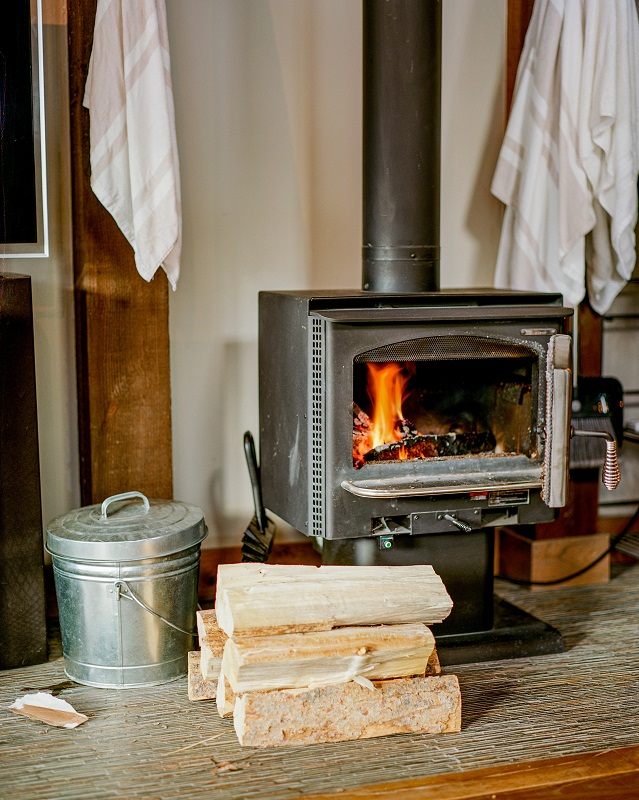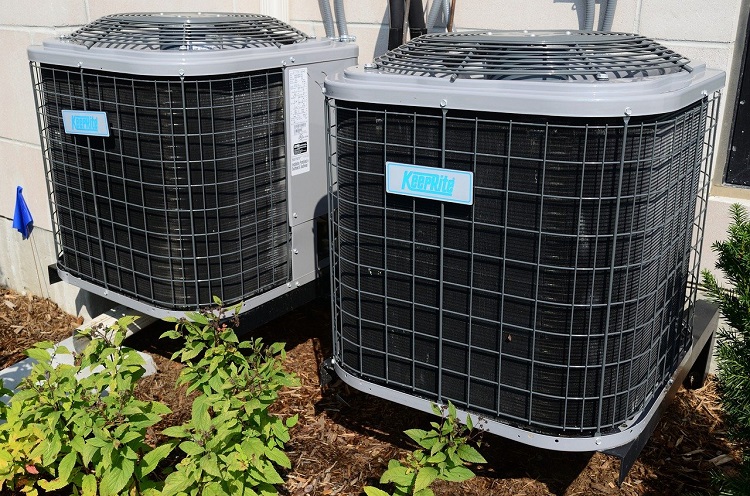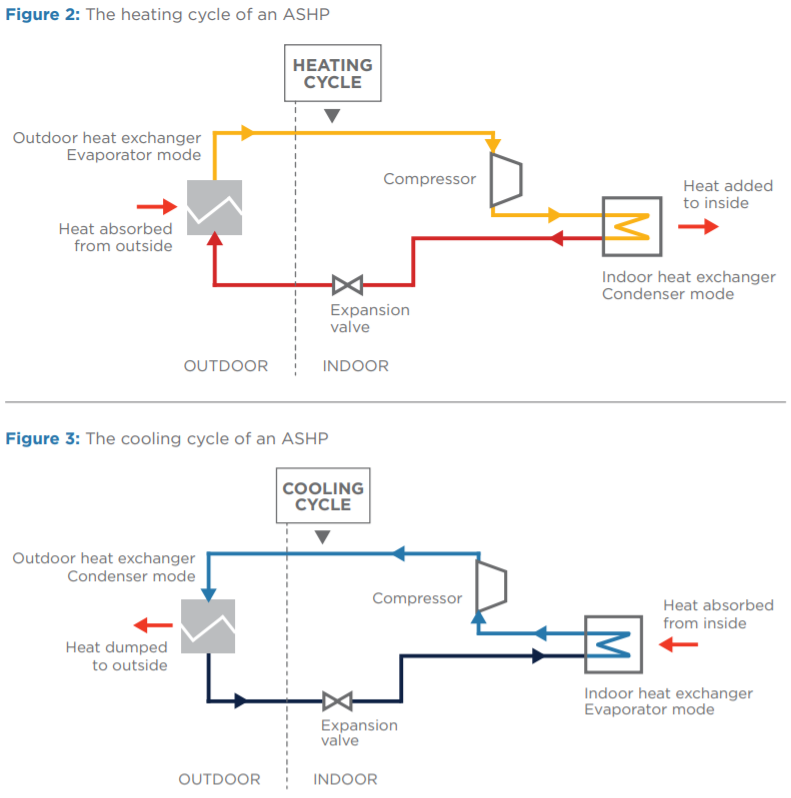Finding Energy and Efficiency with Heat Pumps
As the grid gets greener, the all-electric home gains greater appeal. Propane, heating oil, and natural gas are out. In their place are renewables, with a growing market share of homes and businesses using electricity from solar or wind sources rather than coal-fired power plants.
Heating and cooling is a major consideration for all homes, and the biggest user of fossil fuels in the residential sector. Heat pumps are growing in popularity as a way to transition from the direct use of fossils fuels and increase comfort and savings along the way.
The three main types of heat pumps move heat (rather than generating it) from the air, water, and ground. Air-source heat pumps — the least expensive and most common — use a compressor, condenser, and evaporator to move heat from one area to another.
Heat pumps are meeting only 5% of the world’s demand for heating buildings, but their usage is growing, according to the International Energy Agency.
“Air-to-air heat pumps have been rapidly becoming more widespread in recent years and now dominate global sales for buildings,” the IEA said in its June 2020 report. “In the United States, for example, annual shipments expanded from 2.3 million units in 2015 to 3.1 million in 2019.”

In order to decrease carbon emissions, traditional sources of indoor climate control will need to be replaced. (Source: Austin J)
The numbers are more impressive for new construction in the United States, where heat pumps are used in 40% of new single-family homes and 50 percent of new multi-family homes, according to the IEA.
Thousands of contractors are installing these systems every day, but IMS also has seen recent engineering projects for heat pump systems/technologies. IMS covers these projects for its architectural, engineering, and consulting clients through daily leads from RFPs/RFQs and in Advance Notices of upcoming projects. Some recent projects include:
* The Town of Chilmark, Mass., released an RFP in September 2020 for design services to convert Chilmark Elementary School from oil heat to a cold climate heat pump HVAC system (IMS 531956).
* In California, the Sacramento Municipal Utility District issued an RFI in August 2020 for commercial electrification and energy efficiency program support services. The program included the design of central heat pump water heating systems and assessing building-level electrical infrastructure (IMS 529668).
* Efficiency Maine Trust released an RFP in July 2020 for a firm to design, implement, and report on an integrated thermostat pilot project to test whether heat pump usage can be increased, and overall heating cost decreased, by controlling both a heat pump and a central system with one integrated control (IMS 525522).
* In Oregon, the Lane Regional Air Protection Agency issued an RFP for residential energy audits and final quality control inspections for the Oakridge Air program’s woodstove upgrades, ductless heat pump installations, and home weatherization components (IMS 522471).
* The Shepherd Independent School District in Texas released an RFQ in June 2020 for testing/balancing and commissioning services for the HVAC water source heat pump system at Shepherd High School (IMS 522349).

Modern ASHP units resemble traditional air conditioners, but with the added benefit of providing both heating and cooling functions.
* The City of Ames, Iowa released and RFP in June 2020 for design services for a geothermal heat pump system to serve the heating and cooling needs of 27 houses in a new mixed-income housing subdivision (IMS 520442).
* As part of a Guaranteed Energy Savings Contract, the Britton-Hecla School District in South Dakota released an RFP for the implementation of energy conservation measures and facility improvements such as the replacement of five heat pump rooftop units (IMS 517993).
* Northwest Energy Efficiency Alliance sought a consultant in April 2020 to conduct a survey and gather technical data and hardware price data on variable capacity heat pumps. The project goal was to identify the products, sizing, design, and target applications that provide the best value to consumers and utilities (IMS 514359).
* The Town of Basalt, Colo., released an RFP in February 2020 for the design and installation of a cold climate air-source heat pump to supply heating and cooling at Town Hall. Part of the project’s goal was to demonstrate the heat pump’s application in cold climates and grow community awareness of electric heat pumps in relation to clean energy initiatives (IMS 502255).
Many states have incentives for the purchase of heat pumps as part of a strategy to reduce carbon emissions. In some Northeastern states, hundreds of thousands of homes are heated with No. 2 heating oil. The oil is delivered to homes by trucks and pumped into 275-gallon tanks. Trading an oil-burning furnace for heat pumps can make states cleaner and more energy independent.
A study published in June 2020 by the Rocky Mountain Institute emphasizes heat pumps as a way to address carbon emissions in the home heating sector. Heat pump technology is efficient, and can produce long-term gains, according to the report titled “It’s Time to Incentivize Residential Heat Pumps.”
“In most states today, converting from a gas furnace to a heat pump will reduce emissions on day one; but we must also consider the total emissions over the lifetime of the furnace,” said the report. “For a gas furnace, the emissions will always be roughly a pound of carbon dioxide gas for every 10 cubic feet of gas burned, every year, for as long as you use the furnace. But the story with electric heating is different. As the grid gets greener, electric heating will produce less carbon over time.”
In another study, researchers at the Columbia Center on Global Energy Policy developed a model to understand the choices facing homeowners that need to install new heating and cooling equipment.

An ASHP can provide both heating and cooling solutions for living spaces. (Source: Center on Global Energy Policy at Columbia University SIPA)
“Decarbonizing Space Heating with Air Source Heat Pumps” looked at scenarios for San Diego, Calif., Atlanta, Ga., and Fargo, N.D. The upfront cost of air-source heat pumps was higher than a system with a natural gas furnace and air conditioning, but scenarios with rising carbon prices in coming years would make the lifetime costs of heat pumps less expensive.
The report said policy tools such as incentives, standards, and different utility rate structures could spur the transition to heat pumps as part of the heating decarbonization strategy.
“A large-scale increase in [air-source heat pump] deployments is likely to be an important part of any space heating decarbonization scenario,” the study said. “Aggressively pursuing the deployment of electric heat pumps in the near term, while prioritizing regions where heat pumps are most cost effective, is a ‘no regrets’ strategy.”
Homeowners, designers/builders, and policymakers will all consider whether to use and support heat pumps. Those decisions should consider the likely future, where heat pumps become more efficient, the electric grid includes more renewable sources, and more communities adopt building electrification policies.

